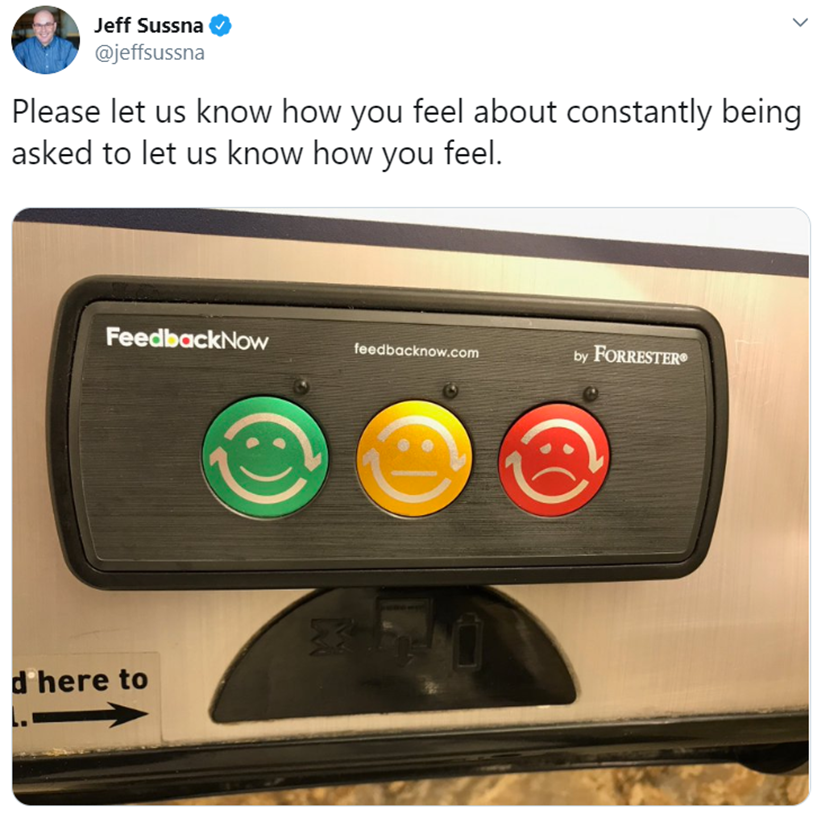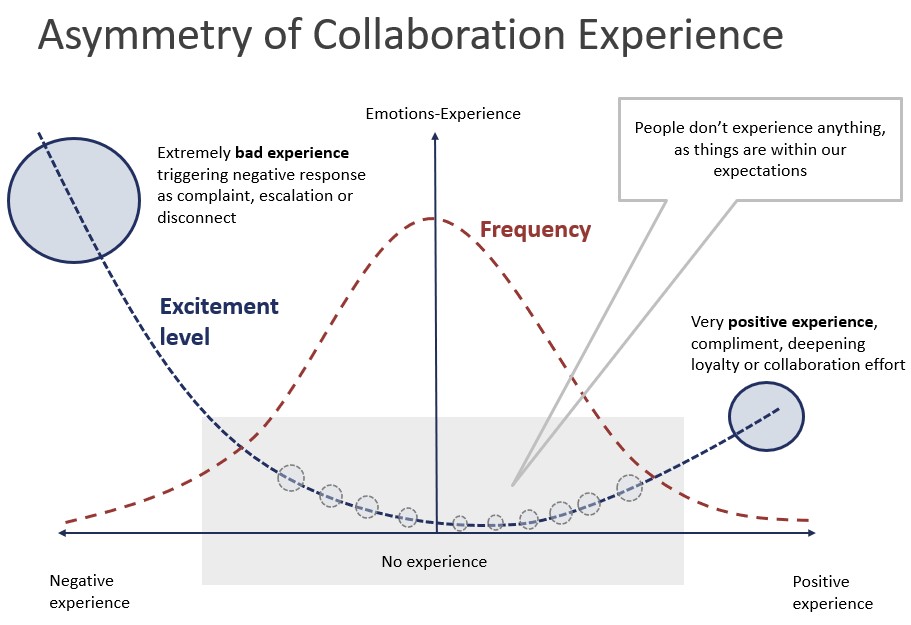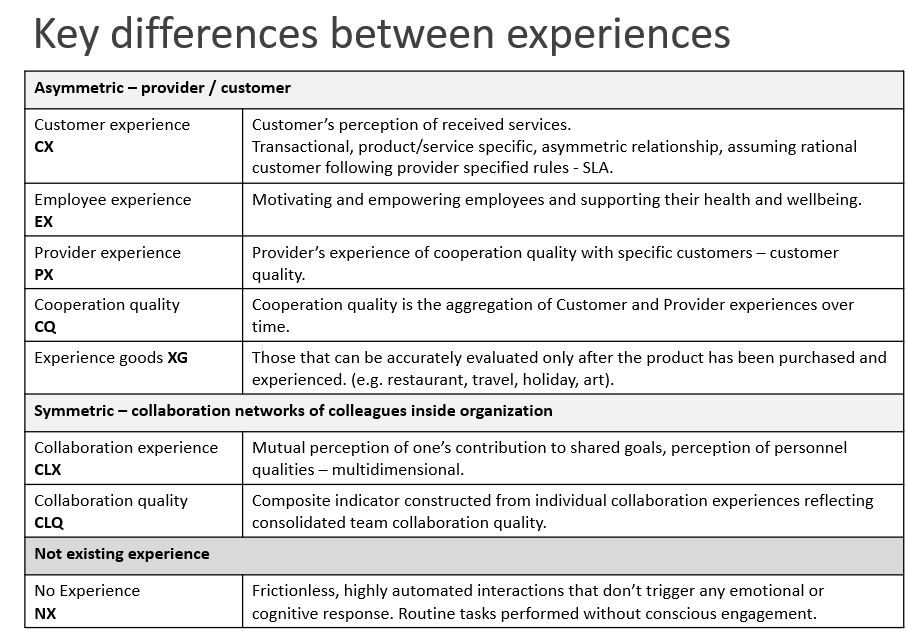The habit of collecting feedback after every interaction has become a widespread mispractice—driven by the uncritical adoption of customer-oriented management models beyond their original scope. Slogans like “The customer is king” or “We are here to serve you” reflect underlying mental models that are being applied in contexts fundamentally different from the transactional relationships for which they were designed. These practices assume a structure where metrics like Customer Experience (CX), NPS, and CSAT make sense—typically where transactional logic applies.
But within organizations, people collaborate with colleagues—not customers. They don’t reflect on their emotions and experiences after every single interaction: when responding to an email, speaking with IT, participating in a meeting, or working on a shared task.
On a typical workday, people engage in hundreds of interactions. Most of these generate no emotional reaction and thus no “experience” to evaluate. Asking people to reflect on something they barely noticed is a fast track to frustration and disengagement. It can even cause people to avoid interactions that trigger automatic feedback requests.
Problems Caused by Repetitive Feedback Collection:
- Repeated requests for feedback disrupt people from their daily work and consume mental energy that could be better spent on actual tasks.
- We ask them to reflect on situations (“How did you like…”) that often feel trivial or irrelevant.
- Annoying, repetitive surveys are a reliable way to undermine the value of your own work.
- Collaborative relationship is subtly transformed into an asymmetric one—where one party is cast in the role of a servant.

In reality, daily work often looks like this:
-
Work gets done without disruptions, complaints, delays, or escalations
-
Technology functions as expected
-
Communication stays within normal, productive boundaries
We don’t notice these moments because nothing went wrong. No drama. No noise. No unnecessary friction.
In a healthy organization, the absence of experience isn’t a gap—it’s a sign of quality and maturity.
Think twice before asking people to rate their experience—especially when:
a) There is no clear customer–provider relationship based on transactional logic (e.g., purchase–delivery)
b) People engage in complex, interdependent collaborations
c) Feedback collection has become a goal in itself, rather than a part of a meaningful improvement process
In fact, when people increasingly ignore your surveys, it might be a good sign: things are running smoothly—and feedback collection can either be suspended or reframed as ‘Let us know if you experience something unusual.’
Practical Hints:
-
Avoid collecting customer-style feedback from people who are actually part of a collaborative effort, not customers
-
Design systems that recognize exceptional situations—both negative and positive—and clearly define the boundaries for triggering deeper situational analysis
-
Shift the goal from high ratings to staying within desired limits—a more realistic and sustainable measure of success

The key message of this article is simple: collaboration operates under a different logic than provider–customer relationships. Avoid mismatching methods and contexts.
No Experience (#NX) is a viable design goal: Seamless, low-effort interactions where cognitive load is minimized — so people can focus on what truly matters.
How to calculate metrics such as the No Experience Index (NXI) and Productivity Index (PI) is part of the IT Performance Reporting course, which provides a clear overview of a comprehensive set of qualitative metrics and measurement methods.
